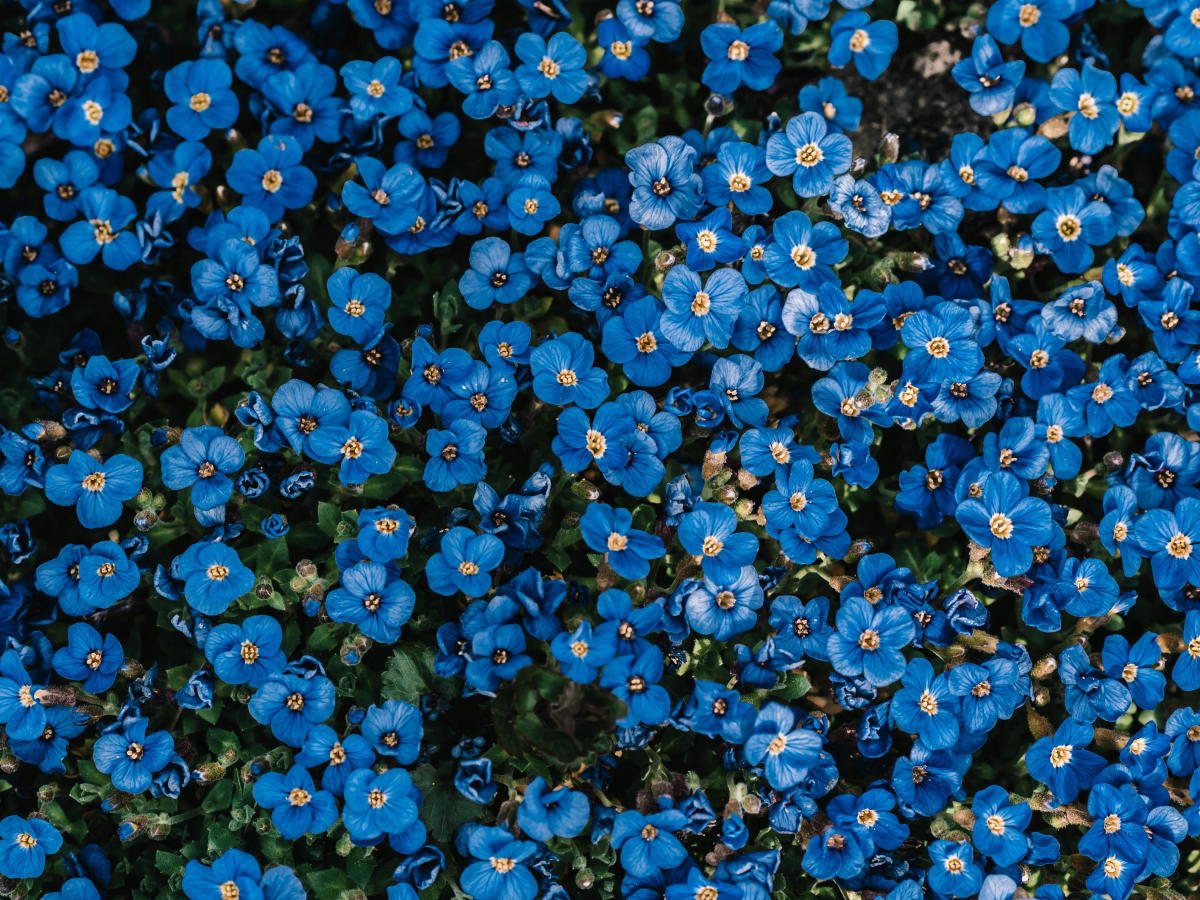Top 10 Blue Flowers to Plant in Your Garden in 2024
Welcome to a world awash in nature’s most calming and enchanting hue – blue! In this captivating journey, inspired by the likes of Martha Stewart, Southern Living, and Vogue, we will introduce you to the mesmerizing realm of blue flowers. These serene blooms, reminiscent of clear skies and tranquil waters, hold a unique allure in the world of gardening. Whether you’re a seasoned horticulturalist or just beginning your journey into the world of floriculture, blue flowers are a must-have in any garden. Join us as we delve into the fascinating world of these exquisite blossoms and unlock the secrets to […]

Welcome to a world awash in nature’s most calming and enchanting hue – blue! In this captivating journey, inspired by the likes of Martha Stewart, Southern Living, and Vogue, we will introduce you to the mesmerizing realm of blue flowers. These serene blooms, reminiscent of clear skies and tranquil waters, hold a unique allure in the world of gardening. Whether you’re a seasoned horticulturalist or just beginning your journey into the world of floriculture, blue flowers are a must-have in any garden. Join us as we delve into the fascinating world of these exquisite blossoms and unlock the secrets to nurturing them to perfection.
Time to explore the mesmerizing realm of striking blue flowers

What are the Different Types of Blue Flowers?
Blue flowers, with their myriad shades and forms, are a testament to the diversity of nature’s palette. From the ethereal periwinkle to the striking cobalt, blue blossoms come in an array of hues. Their uniqueness lies not only in their color but also in their symbolism. Blue flowers are often associated with peace, serenity, and tranquility, making them a cherished choice for gardens and floral arrangements alike. So, what are the benefits of welcoming these azure wonders into your world, and who should consider planting them?
Blue flowers are often associated with peace, serenity, and tranquility
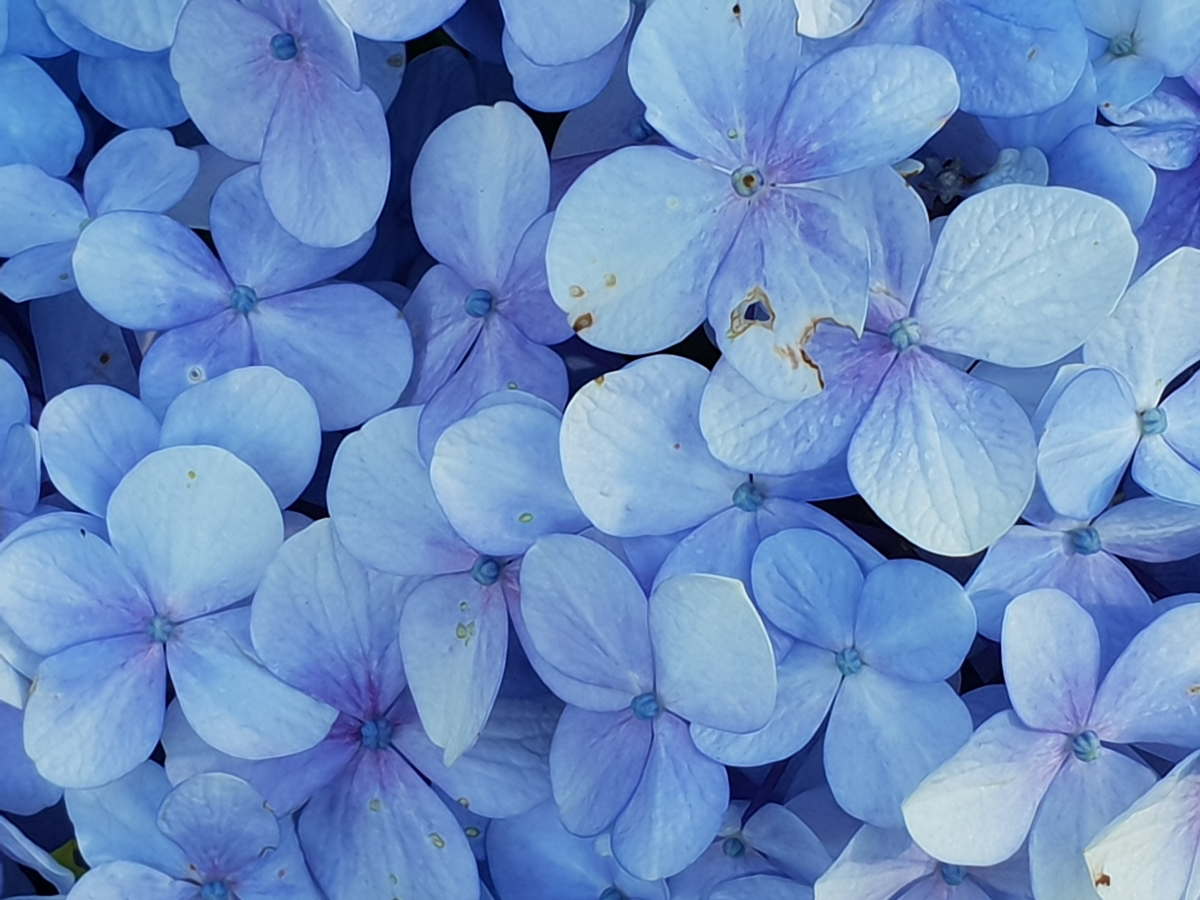
What are the Benefits of Planting Blue Flowers?
Planting blue flowers in your garden is not merely an aesthetic choice; it’s a mindful decision that brings an array of benefits:
- Serenity in Bloom: Blue flowers evoke a sense of calm and tranquility, creating an oasis of serenity in your outdoor space.
- Pollinator Attraction: Many blue blooms attract pollinators like bees and butterflies, contributing to a thriving garden ecosystem.
- Versatility: Blue flowers can complement a wide range of other colors in your garden, enhancing your overall floral design.
- Emotional Upliftment: The sight of blue flowers can have a soothing effect, reducing stress and promoting well-being.
Blue flowers evoke a sense of calm and tranquility

Who Should Avoid Blue Flowers?
While blue flowers hold universal appeal, there are a few scenarios where they may not be the ideal choice:
- Harsh Climates: In extremely cold or arid regions, certain blue flowers may struggle to thrive. It’s essential to choose varieties suited to your local climate.
- Allergic Reactions: If you or your family members have allergies to specific plant pollens, consult with a horticulturist to select hypoallergenic blue flower varieties.
- Soil Limitations: Blue flowers, like all plants, have soil preferences. If your garden soil is highly acidic or alkaline, you may need to amend it to accommodate these blooms.
Now, let’s dive into the enchanting world of blue flowers with a showcase of ten captivating varieties, each with its unique charm and care requirements.
In extremely cold regions, certain blue flowers may struggle to thrive
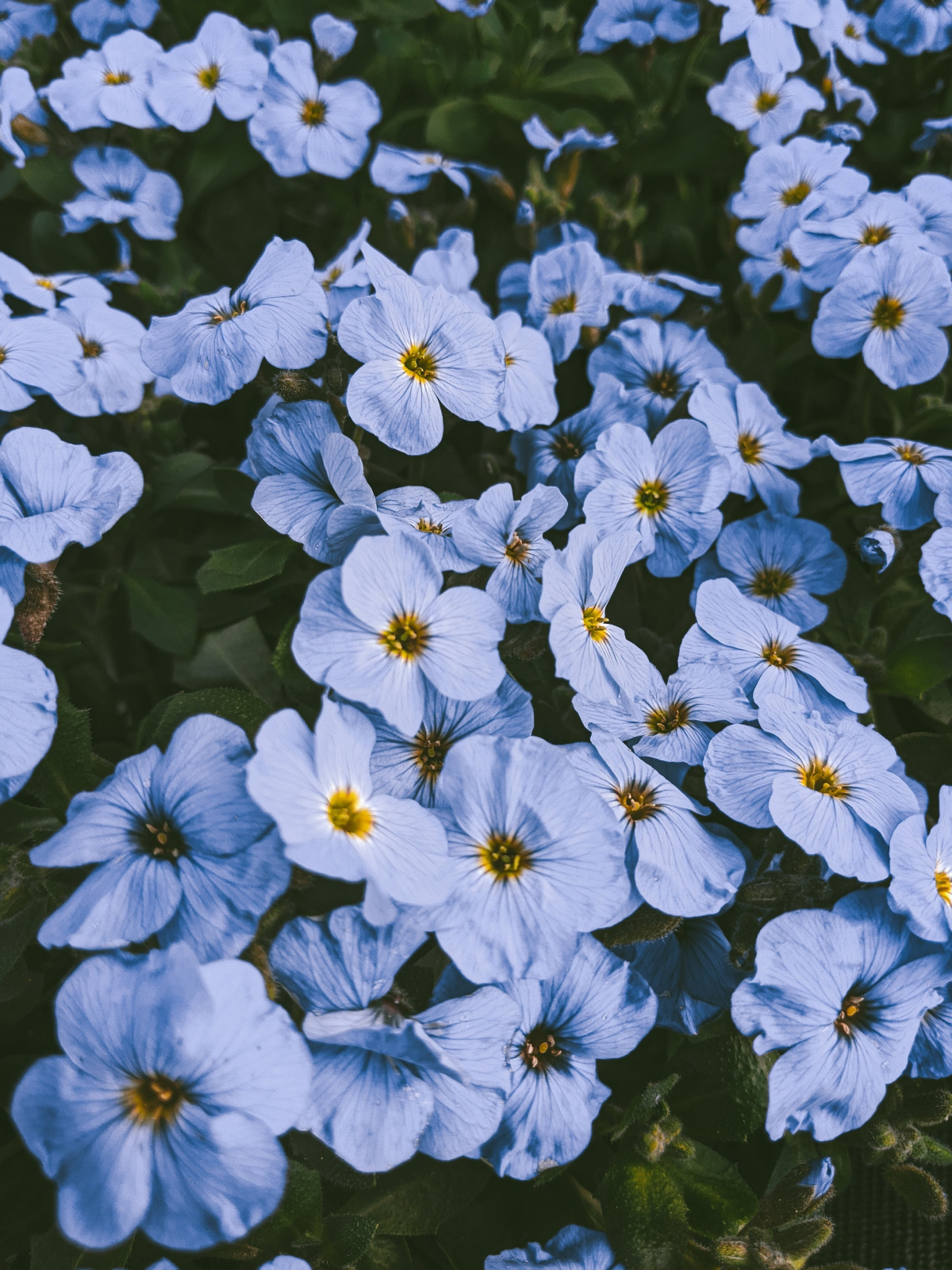
Top 10 Types of Blue Flowers to Plant in 2024
Delphinium (Delphinium spp.)
Known for their towering spikes of deep blue blossoms, delphiniums are the epitome of elegance. These perennial beauties make a dramatic statement in any garden. Here’s how to care for them:
- Sunlight: Delphiniums thrive in full sun to partial shade.
- Soil: Plant them in rich, well-draining soil to ensure healthy growth.
- Watering: Keep the soil consistently moist, as these plants prefer consistent hydration.
- Pruning: Deadhead spent blooms regularly to encourage continuous flowering throughout the season.
- Support: Tall delphinium varieties may require staking to prevent them from bending or toppling over.
Delphiniums display towering spikes of deep blue blossoms

Lobelia (Lobelia spp.)
With their delicate, trailing blooms, lobelias are perfect for hanging baskets and borders. Their vibrant blue hues are a delight to the eyes. Care for them as follows:
- Sunlight: Lobelias flourish in full sun to partial shade, making them versatile for various garden locations.
- Soil: Use moist, well-draining soil to provide the ideal growing conditions.
- Watering: Maintain consistent soil moisture by keeping the soil consistently moist.
- Deadheading: Remove faded flowers promptly to stimulate new growth and prolonged blooming.
- Fertilization: Use a balanced liquid fertilizer to nourish lobelias during the growing season.
Lobelias are perfect for hanging baskets and borders
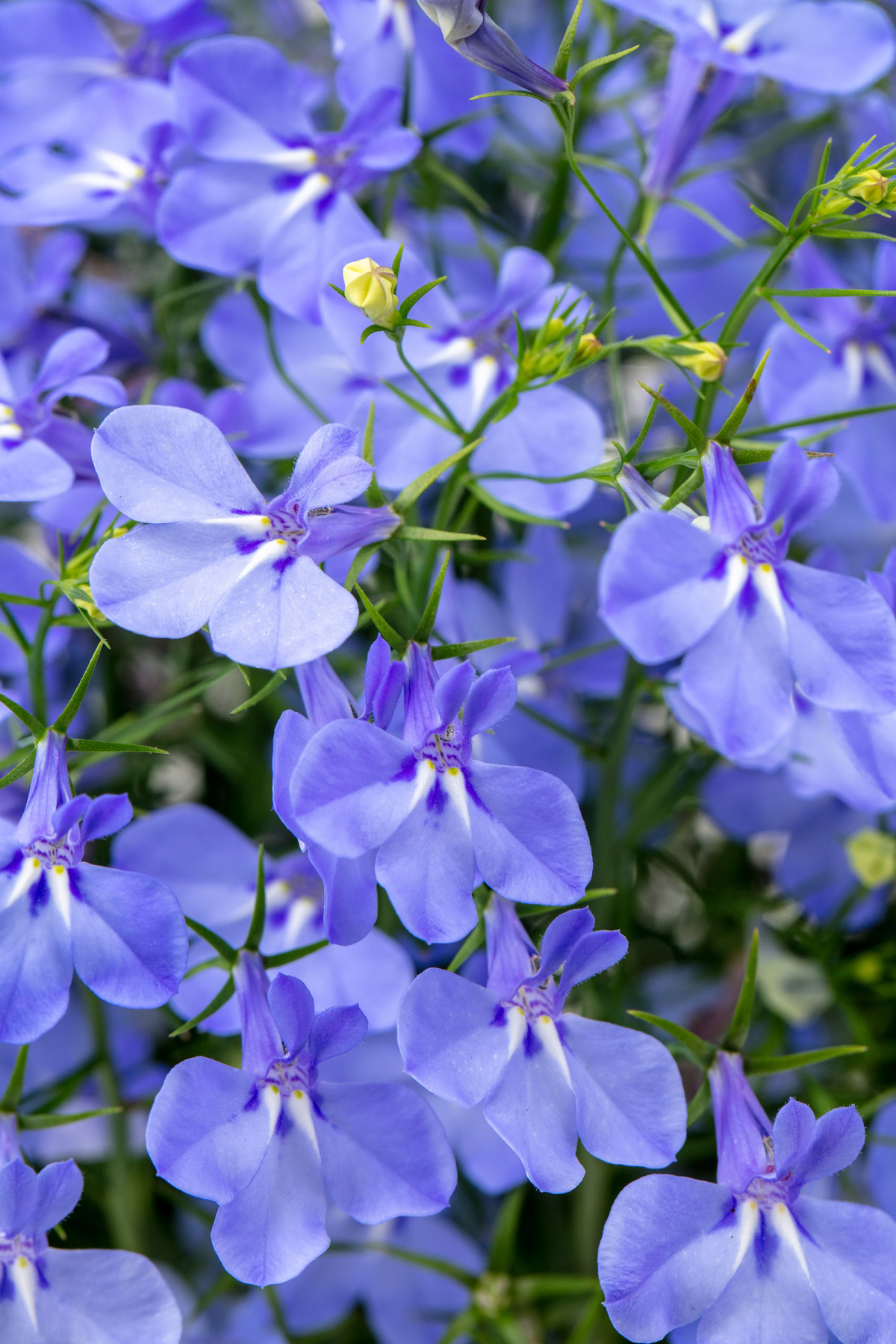
Hydrangea (Hydrangea macrophylla)
Hydrangeas are known for their stunning, globe-like clusters of blue flowers. These deciduous shrubs are a garden favorite. Care for them with these tips:
- Sunlight: Hydrangeas prefer partial shade, providing protection from intense afternoon sun.
- Soil: Choose well-draining, slightly acidic soil to support healthy growth and vibrant blue blooms.
- Watering: Maintain consistent soil moisture, avoiding waterlogging.
- Pruning: Prune after flowering to shape the plant and remove dead or overgrown branches.
- Altering Color: Keep in mind that hydrangea color can be influenced by soil pH; acidic soils tend to produce blue blooms.
Hydrangeas are known for their stunning, globe-like clusters of blue flowers
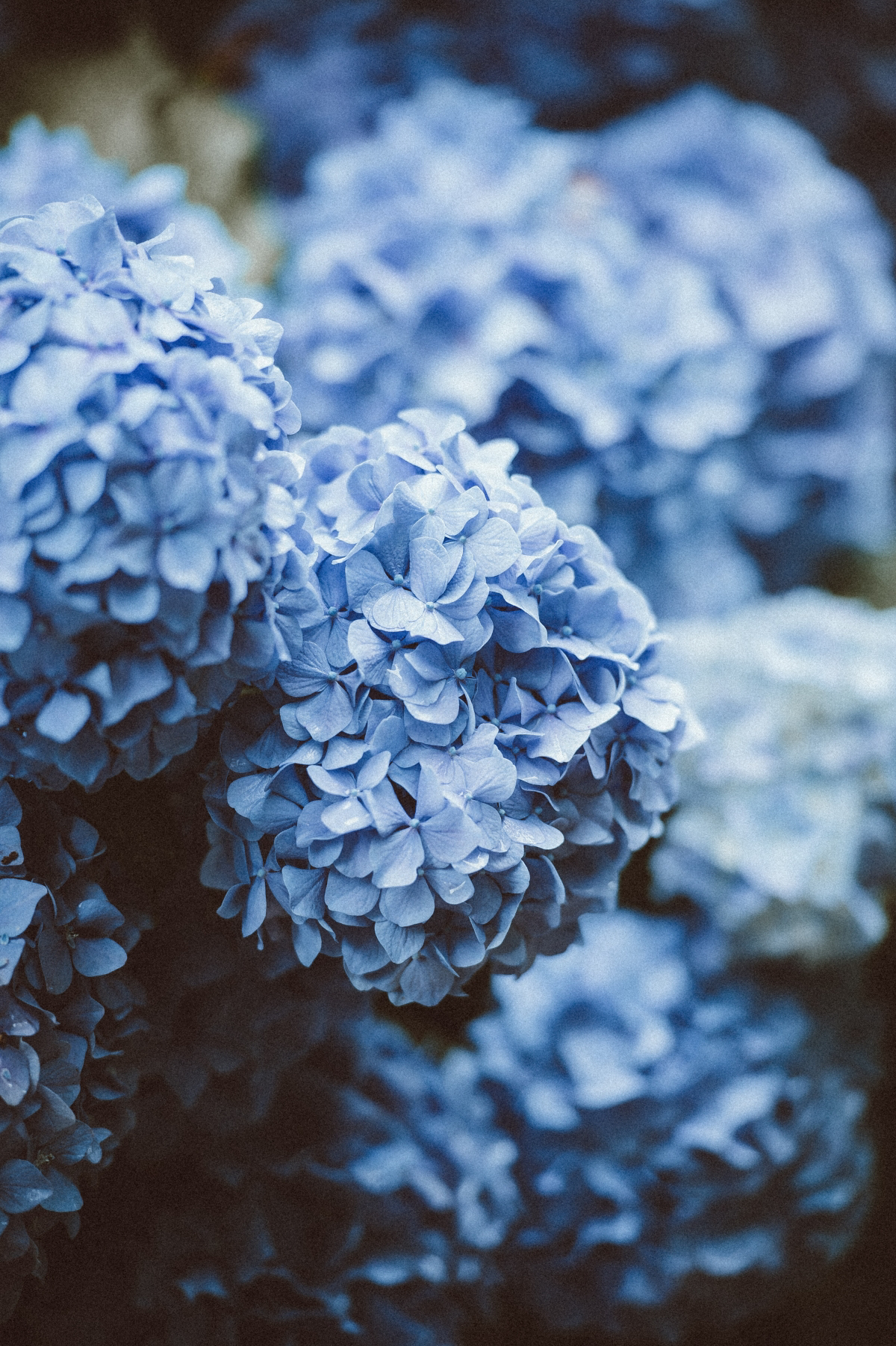
Iris (Iris spp.)
Irises are revered for their intricate, sword-shaped foliage and striking blue petals. These perennial plants bring elegance to any landscape. Care for irises as follows:
- Sunlight: Irises thrive in full sun to partial shade, making them adaptable to various light conditions.
- Soil: Plant them in well-draining soil to prevent waterlogging and root rot.
- Watering: Keep the soil evenly moist during the growing season to support healthy root development.
- Dividing: Divide iris rhizomes every few years to maintain optimal growth and prevent overcrowding.
Irises are revered for their intricate, sword-shaped foliage and striking blue petals
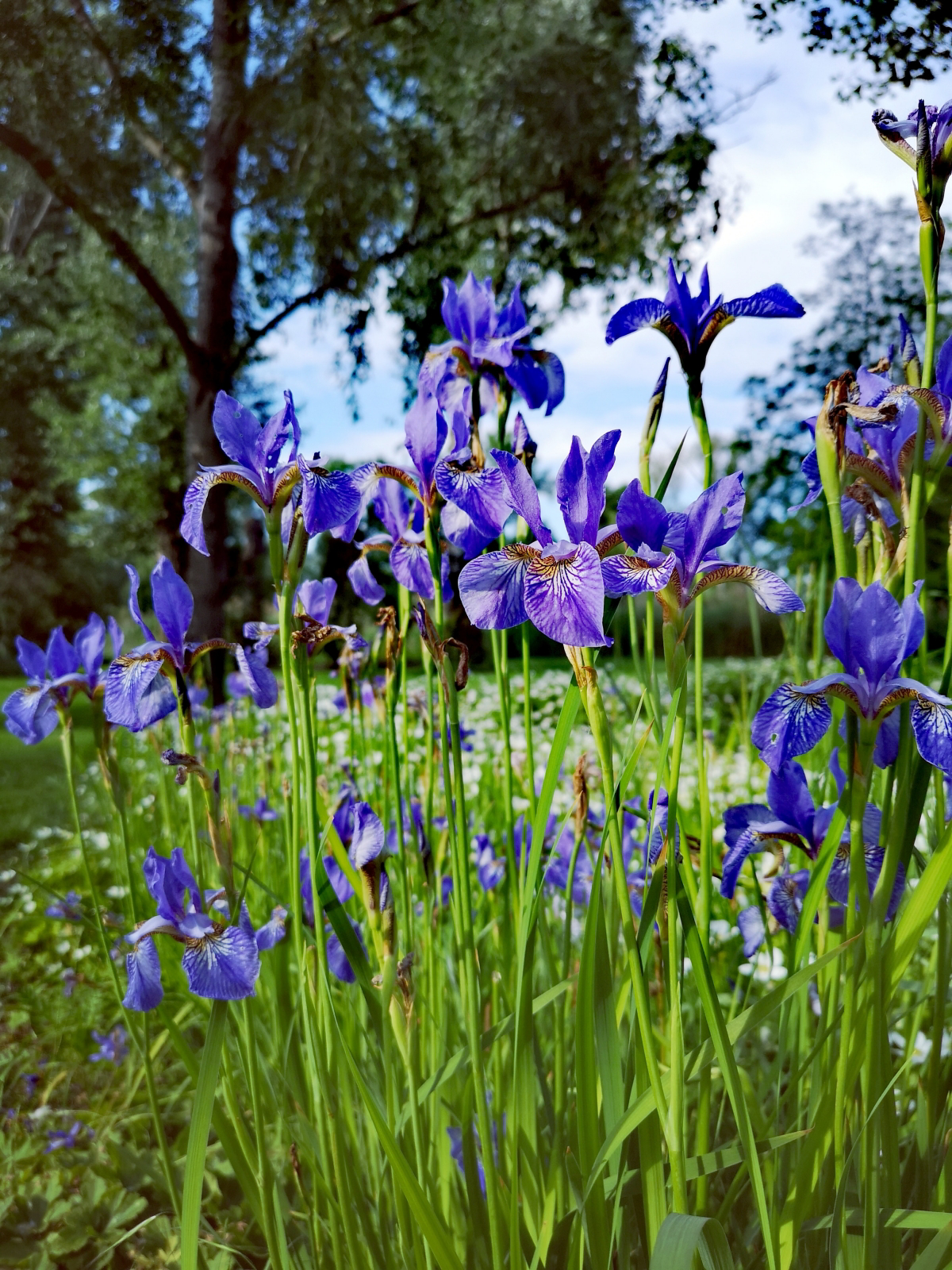
Bachelor’s Button (Centaurea cyanus)
These charming annuals, also known as cornflowers, display vibrant blue petals with contrasting centers. They’re a favorite among pollinators. Care for them with these guidelines:
- Sunlight: Bachelor’s buttons thrive in full sun, where they can soak up the sunlight.
- Soil: Use well-draining soil to prevent root rot and maintain healthy growth.
- Watering: Allow the soil to dry slightly between waterings, avoiding overwatering.
- Deadheading: Remove spent blooms regularly to encourage prolonged flowering.
- Self-Seeding: Bachelor’s buttons often self-seed, providing future blooms for your garden.
These charming annuals are also known as cornflowers
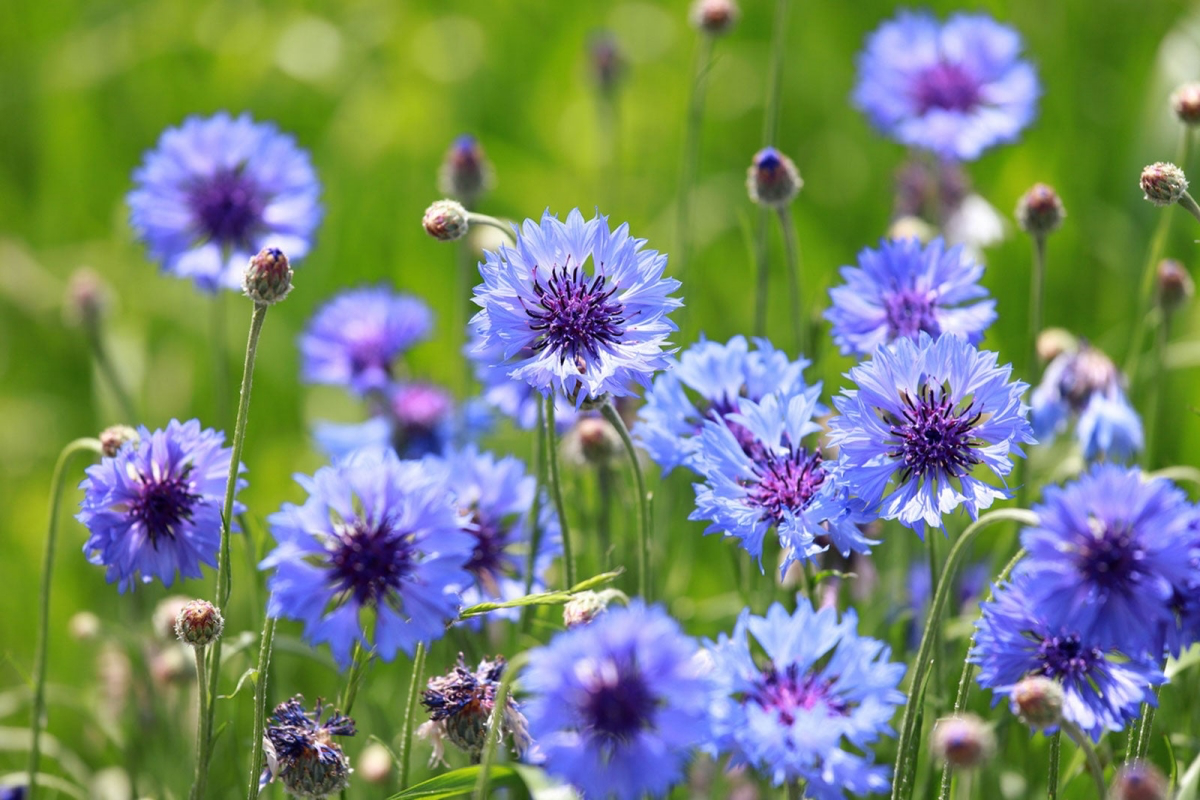
Blue Hyacinth (Hyacinthus orientalis)
Hyacinths are famous for their fragrant, densely packed spikes of blue florets. These spring bulbs are a delight to the senses. Care for them as follows:
- Sunlight: Hyacinths thrive in full sun to partial shade, where they can showcase their vibrant blooms.
- Soil: Use well-draining soil to support bulb development and prevent waterlogged roots.
- Watering: Keep the soil consistently moist during the growing season, especially when they are actively flowering.
- Fertilization: Apply a balanced bulb fertilizer in the fall to nourish the bulbs and promote healthy growth.
Hyacinths are famous for their fragrant, densely packed spikes of blue florets

Gentian (Gentiana spp.)
Gentians are known for their intense, deep blue trumpet-shaped blooms. These perennials thrive in cool climates and alpine conditions. Care for them with these tips:
- Sunlight: Gentians prefer full sun to partial shade, depending on the local climate and conditions.
- Soil: Use well-draining, acidic soil to mimic their natural alpine habitat.
- Watering: Keep the soil consistently moist, as gentians enjoy a moist environment.
- Mulching: Applying organic mulch helps retain soil moisture and provides a protective layer for the roots.
Gentians are known for their intense, deep blue trumpet-shaped blooms
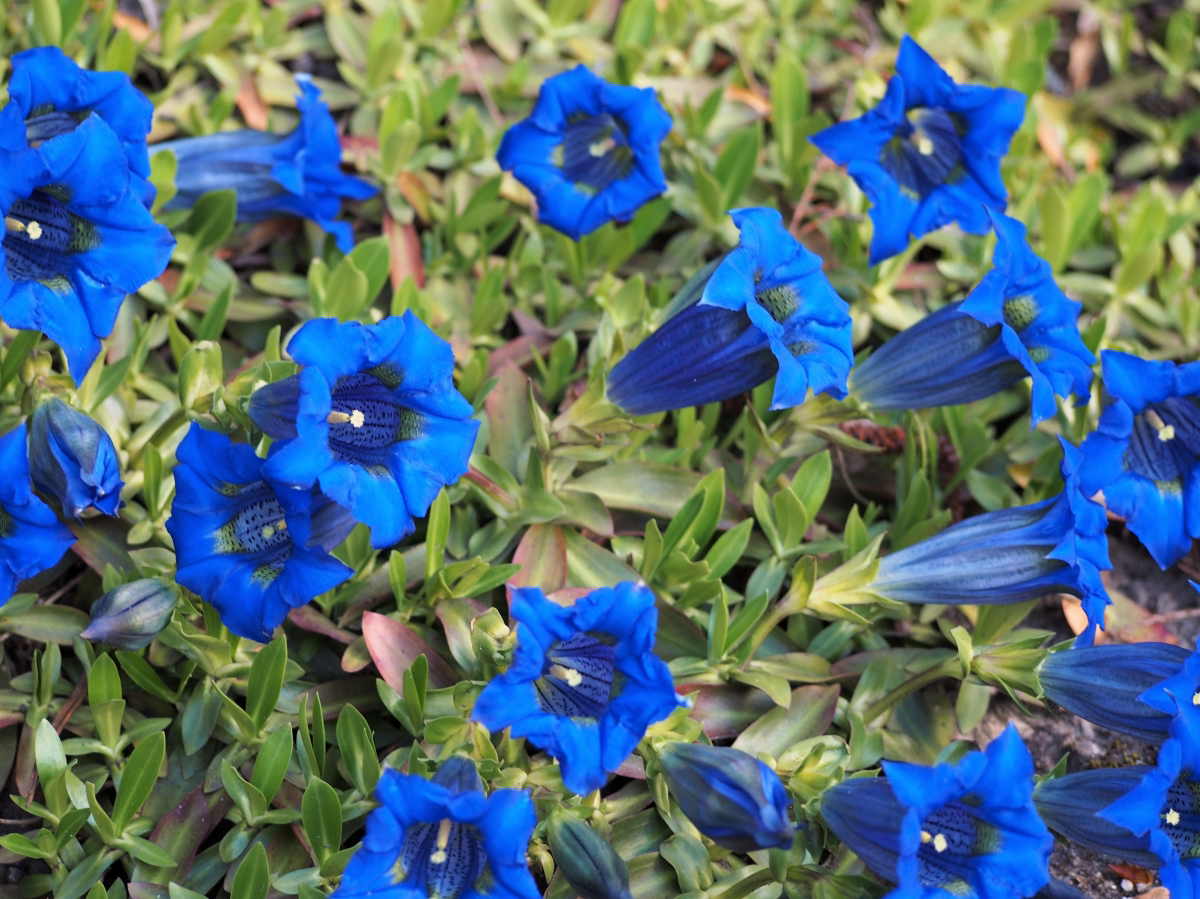
Plumbago (Plumbago auriculata)
Plumbagos are sprawling shrubs with clusters of small, sky-blue flowers. They’re perfect for ground cover or climbing trellises. Care for them with these guidelines:
- Sunlight: Plumbagos thrive in full sun to partial shade, making them versatile for different garden locations.
- Soil: Choose well-draining soil to prevent waterlogged roots and promote healthy growth.
- Watering: Keep the soil consistently moist to support their lush foliage and flowering.
- Pruning: Prune plumbagos as needed to shape and control their growth.
- Pest Control: Be vigilant for whiteflies, which can be a concern in some regions.
Plumbagos are sprawling shrubs with clusters of small, sky-blue flowers
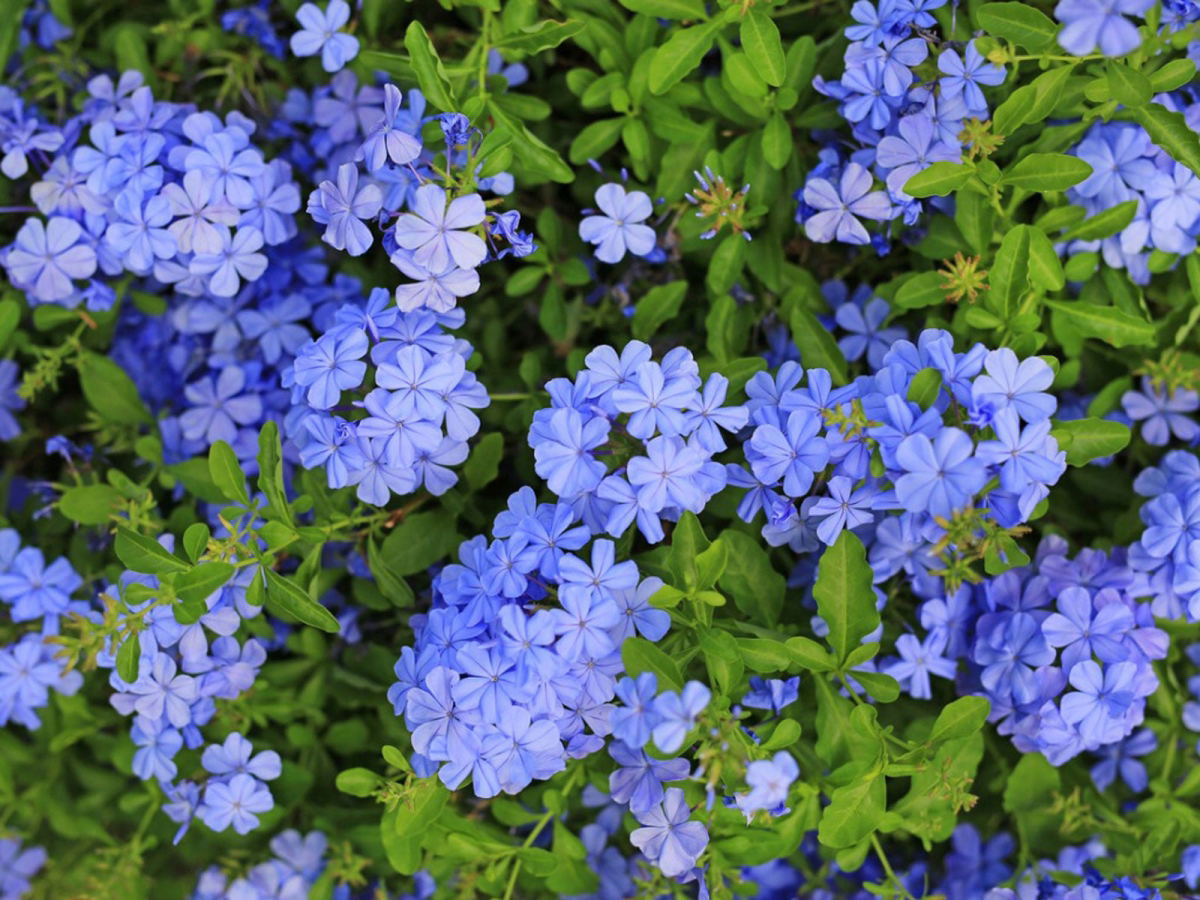
Balloon Flower (Platycodon grandiflorus)
Balloon flowers get their name from their unique balloon-like buds that burst open to reveal star-shaped blue blossoms. These perennials are a whimsical addition to any garden. Care for them as follows:
- Sunlight: Balloon flowers thrive in full sun to partial shade, depending on the local climate.
- Soil: Choose well-draining soil to prevent waterlogged roots and promote healthy growth.
- Watering: Keep the soil consistently moist to support their blooming and overall vigor.
- Deadheading: Removing spent blooms encourages new ones, extending the flowering season.
- Dividing: Divide balloon flower plants every few years to maintain their vigor and prevent overcrowding.
Balloon flowers get their name from their unique balloon-like buds

Blue Morning Glory (Ipomoea tricolor)
Morning glories are famous for their funnel-shaped blue flowers that unfurl in the early hours. These annual vines are perfect for trellises and fences. Care for them with these guidelines:
- Sunlight: Morning glories thrive in full sun, where they can receive ample sunlight for their growth.
- Soil: Choose well-draining soil for optimal root health and to prevent waterlogged conditions.
- Watering: Keep the soil consistently moist to support vigorous climbing and blooming.
- Support: Provide sturdy support structures, such as trellises or fences, for the vines to climb.
- Re-seeding: Morning glories often self-seed, ensuring future blooms and a continued presence in your garden.
Morning glories are famous for their funnel-shaped blue flowers
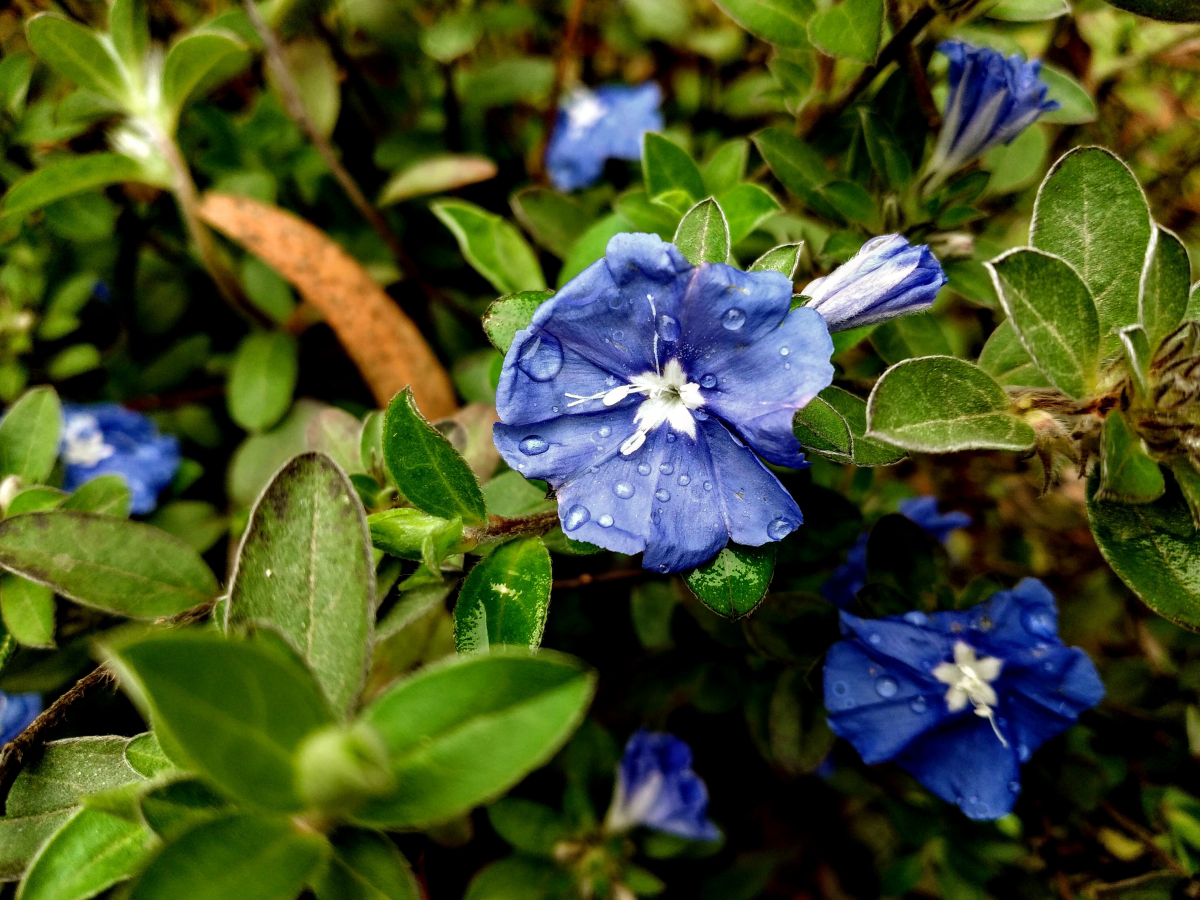
With these ten blue flower varieties, you have a spectrum of choices to infuse your garden with the calming allure of blue. Each bloom holds its unique charm and care requirements, ensuring there’s a blue flower for every garden style and level of expertise.
Conclusion
As we conclude our journey through the world of blue flowers, I hope you’ve been inspired by the serenity, beauty, and versatility that these blooms offer. Whether you’re seeking the elegance of delphiniums, the fragrance of blue hyacinths, or the whimsy of morning glories, there’s a blue flower that’s a perfect fit for your garden. Whether you’re a seasoned gardener or a novice with a newfound passion for plants, blue flowers are a delightful choice. As you nurture and care for these blooms, you’ll discover that they not only beautify your garden but also evoke a sense of tranquility and well-being in your heart. So, let’s paint our gardens with the soothing shades of blue and create a haven of serenity that beckons us to embrace the beauty of nature. Until next time, may your gardens flourish with the enchanting elegance of blue flowers, and may your spirits bloom with every petal that graces your world. Happy gardening!
Now you know that there’s a blue flower that’s a perfect fit for your garden!
